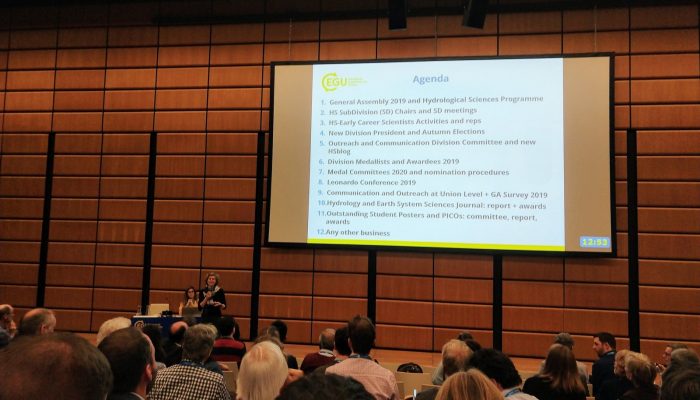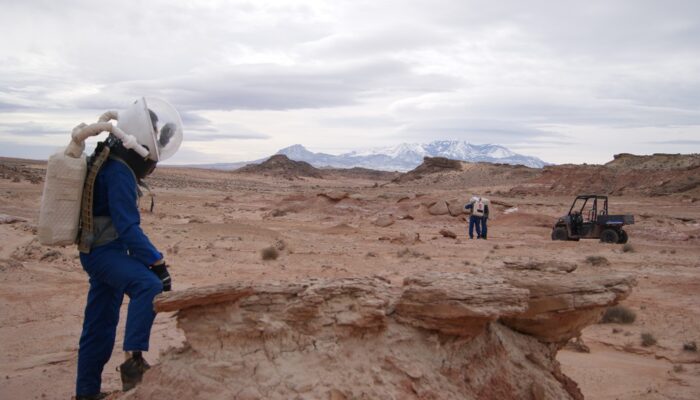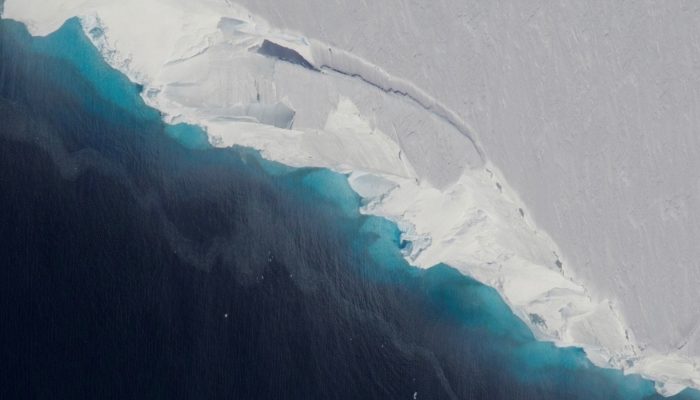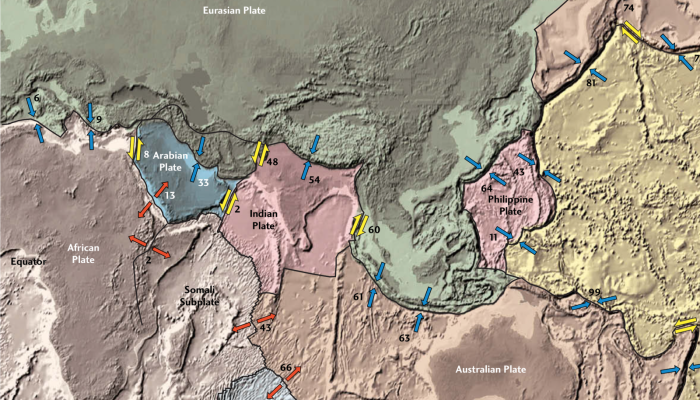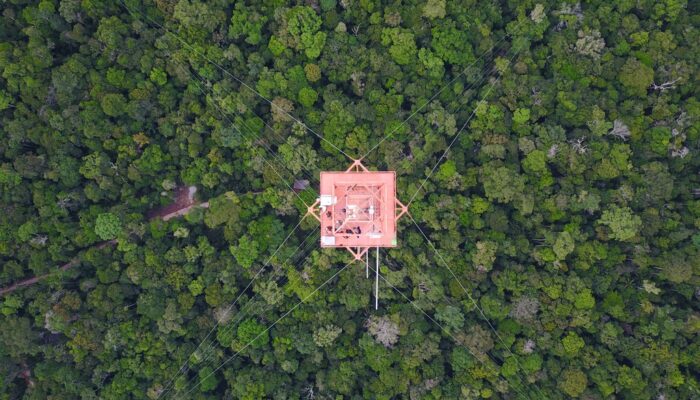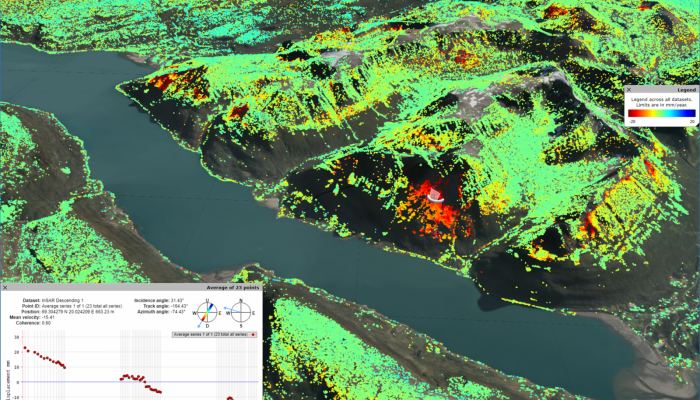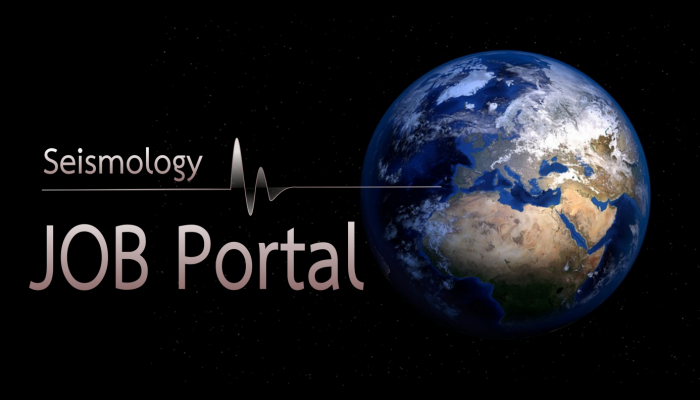The annual division meeting for Hydrological Sciences is the place to get updated on the latest developments of our division. It was great to see that hundreds of you attended. For those that did not attend (or for those that appreciate a reminder of what happened), here are some of the highlights: The Hydrological Sciences Division has a new president: Maria-Helena Ramos will serve as the preside ...[Read More]
GeoLog
Imaggeo on Mondays: Simulating a mission on Mars
Establishing a human presence on Mars is increasingly seen by space agencies and private organizations as the horizon frontier in human space exploration. These long-duration missions however, impose a high degree of technological, operational, physical and psychological challenges. Mars analog habitats, such as the Mars Desert Research Station (MDRS) in Utah (U.S.) are established to conduct fiel ...[Read More]
Cryospheric Sciences
Image of the Week — Cavity leads to complexity
A 10km-long, 4-km-wide and 350m-high cavity has recently been discovered under one of the fastest-flowing glaciers in Antarctica using different airborne and satellite techniques (see this press release and this study). This enormous cavity previously contained 14 billion tons of ice and formed between 2011 and 2016. This indicates that the bottom of the big glaciers on Earth can melt faster tha ...[Read More]
GeoLog
First evidence of microplastics on mountain glaciers
We tend to think of glaciers as spotless pristine settings. But “if plastic is everywhere, why not on the surface of glaciers?” This occurred to Roberto Sergio Azzoni, a professor of environmental science and policy at the University of Milan in Italy, who decided to find the answer to this question for himself. At the European Geosciences Union General Assembly in Vienna, Azzoni and his team pres ...[Read More]
Hydrological Sciences
A personal view on EGU 2019 – an edition like no other
This year Vienna was (for me) awfully cold. Sitting in the sun in the midst of happy conference attendees was definitively not an option at EGU this year. Due to the new EGU schedule with parallel sessions and longer oral sessions, making it until the lunch break was also a big challenge, at least for someone like me, who has more of a northern lifestyle. Luckily, this year posters were scheduled ...[Read More]
Tectonics and Structural Geology
Meeting Plate Tectonics – Eric Calais
These blogposts present interviews with outstanding scientists that bloomed and shape the theory that revolutionised Earth Sciences — Plate Tectonics. Get to know them, learn from their experience, discover the pieces of advice they share and find out where the newest challenges lie! Meeting Eric Calais Eric Calais is Professor of Geophysics and Head of the Geosciences department at the Ecole Norm ...[Read More]
GeoLog
Imaggeo on Mondays: Science above the Amazon rainforest
The color and symmetry of the Amazon Tall Tower Observatory (ATTO) sticks out against the endless green of the rainforest. Built in a remote and pristine location, the ATTO tower is the tallest construction in South America. In a joint Brazilian-German project, atmospheric scientists aim to unravel the interaction of pristine rainforest with the atmosphere. With its height of 325 meters, the ATTO ...[Read More]
Natural Hazards
InSAR Norway: the big eye on Norwegian unstable rock slopes
Marie Keiding is a researcher in the Geohazard and Earth Observation team at the Geological Survey of Norway. Together with her colleague, John Dehls, who is leading the project, she works to develop and operate the new mapping service called InSAR Norway. Before we start, let’s briefly describe what is InSAR. First, the Synthetic Aperture Radar (SAR) is a day and night operational imaging system ...[Read More]
GeoLog
In Vienna for the weekend? Here’s a taste of what’s on offer…
The General Assembly has come to an end, with only a few hours left to go. Many of the participants will make their way home over the weekend, but if you’ve chosen to stay on for a little longer, then this list of cultural activities and things to do in Vienna might just be the ticket! Have coffee, Vienna style Experience the true delights of Viennese coffee at Cafe Prükel. Strong and delicious &# ...[Read More]
Seismology
Seismology Job Portal
On this page we regularly update open positions in Seismology. Do you have a job on offer? Contact us at ecs-sm@egu.eu

